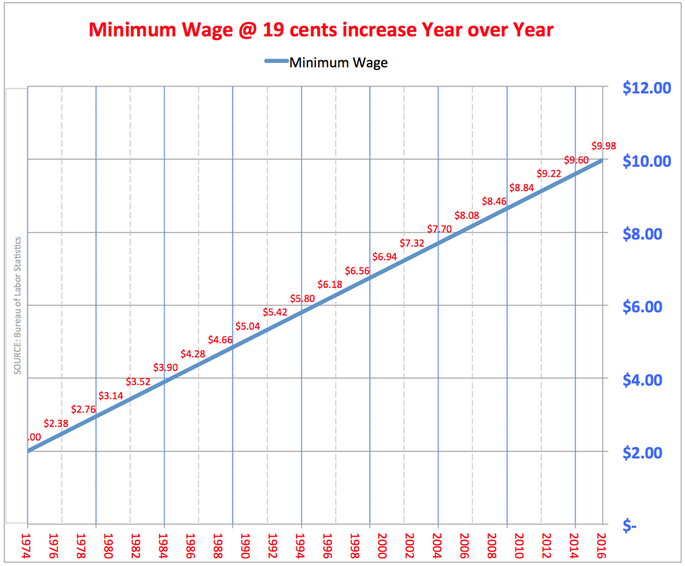|
It’s been said that the race is long; but in the end, it’s only with your self.
Indeed, the greatest challenges are fought, won, and lost within. Yet most companies believe the biggest challenges are to be waged against competitors. Without a doubt, to be the best competitor, today’s organizations must proactively seek a broad range of perspectives, outlooks, evaluations, and proposed solutions from within. Indeed, “diversity” is not only a great buzzword; it’s also a foundational strength of the world’s most successful corporations. How else can we investigate potentially blockbuster alternatives if we can’t bring ourselves to appreciate the perspective of the proverbial devil’s advocate? Why wouldn’t the boss want to (at least) hear a broad spectrum of ideas and possible courses of action before selecting the one plan that presupposes a path toward success? Why not open the door to receiving multiple approaches to the achievement of stated goals and mission accomplishment? Why would anyone look down upon efforts to promote diversity? Here’s the challenge with programs that truthfully promote real diversity: Promoting diversity is all too often viewed as “anti-status quo.” And we all know that those in power will exert great effort to remain in power. This is a true statement regardless of the empowered demographic: women versus men, or the wealthy versus the poor. Take your pick, find a difference, and people will attempt to rack and stack; this is true whether we are discussing ethnicity, education, skill, geographic location, or the hotly debated Hotwheels ® versus Matchbox ® argument. Promoting diversity, by definition, means the active elevation and advancement of an overall VARIETY OF TYPES, as opposed to a singular or narrower set of values. And when one elevates and advances a frame of reference (or program) over others, there is an implied bias against other dissimilar frames of reference. Consider Coke ® versus Pepsi ®, East Coast versus West Coast, football versus baseball, and diversity–driven programs versus programs that don’t appear to value increased diversity. QUESTION: In the final analysis, what is the goal of a well-intentioned diversity program? ANSWER: The goal is to “catch up.” When an organization seeks to add additional value through increased diversity, that organization is attempting to catch up and pass something… to find a better, more innovative way to improve, say, the bottom line… to catch up and pass the historically best bottom line is to become a better, more efficient organization. Sometimes that bottom line is viewed in terms of profit. Sometimes that bottom line is seen as an improved decision-making process, which leads to a better product or service, which leads to a better profit. Sometimes that bottom line is manifested in a more balanced and sensitive culture, which leads to a happier, more productive workforce, which often drives up productivity, which leads to a better profit. And sometimes that bottom line is reflected in an organization’s approach to problem solving. Indeed, sometimes avoiding groupthink is simply the right thing to do. And that is never a bad reason. However, to “catch up” with something or someone, you and your organization have to run faster, think smarter, be stronger, and, in general, be better than the one you are attempting to overcome. Most of the time, the “one to overcome” is seen as an external competitor. However, in the final analysis, the one to overcome is you, your current team, and your existing organization. To be better tomorrow, you need to run faster, think smarter, be stronger, and be (more) different (and diverse) than the entity you are today. If and when you and your company deliberately and consistently do this, you will literally stop paying too much attention to competitors, and you will begin reaping significant dividends from a more realistic – and “panopolistic” - view of the challenges (some of which include your competitors), the choices (the more, the better), and the expanded set of viable solutions (the more informed, the better) from which you can implement. If you truly value diversity, you will not only long for the day when you and your organization become more diverse, you will see diversity for what it is: a capital investment of strength, a tangible intangible that will take you far outside the norm, and make you the front-runner in terms of capability. You will stop seeing diversity as a code word for racial, ethnic, or gender-based affirmative action. Instead, you will see diversity as a positive push for a faster, smarter, stronger, and more profitable organization. Regardless of how you view the bottom line (profit, productivity, practice, or presence), you should LOVE the characteristics of a diversified workforce. Diversity is not (just) about race, color, gender, or creed. Although those are popular monikers to attack, marginalize, and demonize. Diversity is about experience, perspective, and predilections. Promoting diversity is akin to valuing different experiences, opposing points of view, and other people’s penchants and preferences. More specifically, promoting diversity is literally improving upon the process of learning and (dare I say it) expanding upon and increasing the likelihood of success. After all, how did you come to like (or dislike) rocky road ice cream? You tried it long after your first taste of chocolate, strawberry or vanilla. At some point, you diversified your tastes. Me? I like pineapple-coconut-infused ice cream. If you haven’t tried it yet, I suggest you diversify further. Likewise, when was the last time you actively sought opinions, perspectives, and courses of action far outside your usual realm of thought (…the status quo)? In case you didn’t know, the most important organization in your world is YOU. As a member of the human race, you are a vast collection of systems and subsystems. Our bodies are an integrated mix of circulatory, respiratory, and immune systems. Let’s not forget the muscular, endocrine, and digestive systems. Each of these systems functions interdependently -- alone, yet in concert with each other. As different as each system is, all of them bring immeasurable value to this thing called life. Indeed, if merely one system stops functioning, the entire organization is at risk of dying. The same is true of other multi-faceted, seemingly brick-and-mortar, physical organizations. Unfortunately, too many organizations say, “people are our most valued asset,” while actively, recklessly choosing to devalue and minimize the scope of this asset. Remember: families, small businesses, and multinational companies are merely organizations of different sizes. All organizations are kept alive by various subsystems, each of which brings a certain functional value to the organization. Moreover, each of those subsystems has a separate and distinct view of organizational activities. And even though they share common goals, rituals, and a single place within the community, Mommy has her view, as does Daddy, little Suzie, and Danny Junior. Each of their respective views is preciously interdependent upon the others’ points of view. Likewise… The Accounting staff understands the value of machinery AND labor. Sales personnel know the value of a smile, a firm handshake, AND a signed sales order. The Human Resources department knows the total value of various compensation packages AND good labor relations (or the lack thereof). And YOU… You know the value of a diverse organization, right? If not, you might want to find a way to catch up and overcome. Just remember: the one to overcome is the present-day entity: you, your current team, and your existing organization. In order to be better tomorrow, you need to run faster, think smarter, be stronger, and be more diverse than you are today. Ready, set… If you have read any of my previous posts, you are aware of my mantra, Accept. Adapt. Achieve. ® It’s a catchy bumper sticker and perhaps a nice way to sum up some really good theories on life. But what does it really mean? Well, let’s start with the obvious: Accept reality. Don’t fight what is. Gandhi, both Martin Luthers understood this maxim. Successful leaders and truly happy people pay attention to this easily understood but often difficult-to-apply concept. Here’s a powerful fact: We cannot change anything that has already happened. The best we can do is to love it. This caution to love the bad things in your life may seem morbid, especially when terrible things sometimes happen to seemingly good people. However, by loving what “is,” we embrace what was always to be, and will always be. By loving what is, we accept the reality of how things are. But as Rumi said, “Your task is not to seek for love, but merely to seek and find all the barriers within yourself that you have built against it.” Become adaptable. The word “adapt” is mentioned almost 50 times in my recent book, The Ideal. That’s 50 times in a book with 220 pages… hmmm; perhaps there is a theme within the book. When we become adaptable, we spend our energy working with people – not against the things that people do. When we become adaptable, we manifest life as described by the great poet, Rumi when he said, “God teaches by means of opposites, so that you will have two wings to fly, not one.” When we become adaptable, we leverage our strengths and learn to extract value from what has already happened. When we become adaptable, we embrace change. And when we embrace change, we embrace life. For what is life without change? Achieve. This last one is interesting. At the various keynote speeches I provide, I often conduct an informal poll asking the attendees which one of the three (Accept, Adapt, or Achieve) are most important. Time and time again, most people say, “Accept!” Only a handful will say, “Adapt.” And no one ever says, “Achieve.” However, “Achieve” is the most important of the three verbs. Indeed, the ability to accept is necessary and powerful; yet it is often difficult to implement. Interestingly, one of my other frequent statements is, “Never underestimate the power of denial” (the opposite of acceptance). Likewise, the ability to adapt is highly desired; adaptability is a very practical trait in this ever-changing world. However, above all… in almost everything we do, we must begin with the end in mind. More to the point: What do you want to achieve? Sure, we can accept all kinds of things that happen without our knowledge or approval. And we can probably adapt to almost anything if we simply had to do it. But puppies, cats, and mice do the same thing: accept and adapt. On the other hand, many species don’t adapt… and they become extinct. The same can be said for bad employees, horrible bosses, and every other person in the world who does not adapt to their respective environment. As for you and me… we can actually set the stage for awesome performance in this production called life. As the playwright, producer, director, and actor of your specific life, you have more than a starring role. You have access to the Master Plan, the goal, the target, and (dare I say it…) the purpose. So the question remains: What is your purpose? Try this word exercise: Say the following six words aloud, with a strong emphasis on the capitalized word.
A. Before you can create lasting change in your life, there are a few things you have to ACCEPT. B. Then, you can begin to ADAPT your daily lifestyle (or style of living) to a plan that facilitates the achievement of your goals. Change your life to match your goals. C. If and when you can answer these 4 questions, you will know what you want to ACHIEVE. Only YOU know the answers to A, B, and C above. So again I ask you… What do YOU want to achieve? Accept. Adapt. Achieve. ® |
My purposeInspiring a worldwide community of optimistic realists. Archives
April 2024
Categories |



 RSS Feed
RSS Feed
